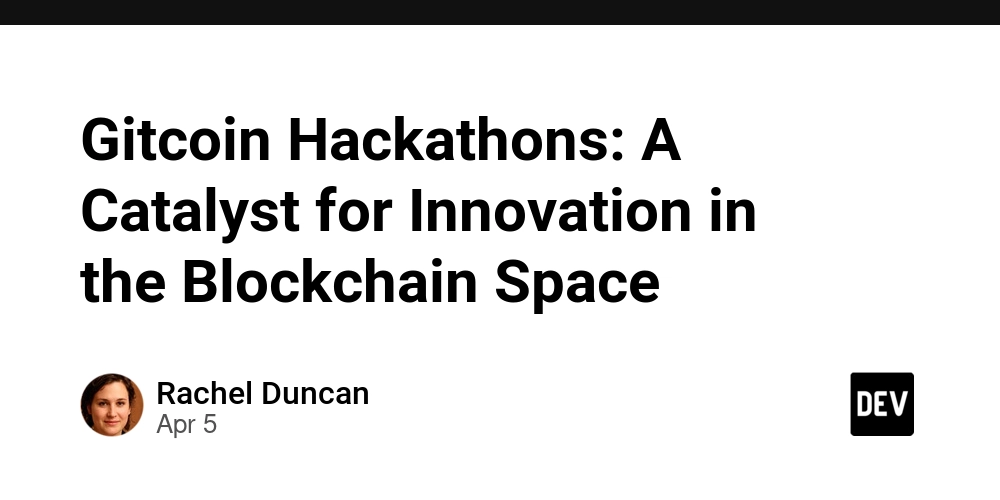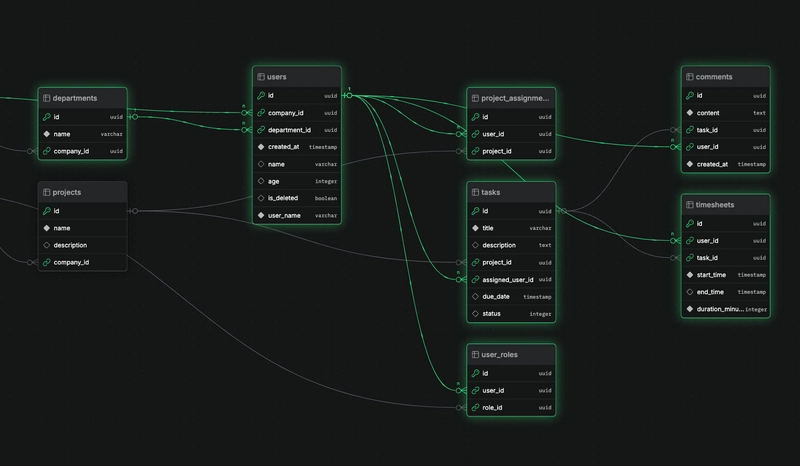Gitcoin Hackathons: A Catalyst for Innovation in the Blockchain Space
Abstract: Gitcoin hackathons have rapidly become a cornerstone for pioneering innovations in the blockchain and decentralized technology sectors. This post explores the background, core features, key applications, challenges, and future directions of Gitcoin hackathons. We also examine the broader influence of decentralized ideation and funding on open-source projects and blockchain innovation. Through tables, bullet lists, and embedded hyperlinks to authoritative sources, we provide a technical yet accessible overview suitable for developers, innovators, and anyone interested in the decentralized future. Introduction In today’s fast-evolving tech landscape, hackathons serve as breeding grounds for new ideas and transformative technologies. Among these, Gitcoin hackathons stand out due to their emphasis on blockchain, decentralized finance (DeFi), NFTs, and open-source innovation. By connecting global developers with projects that advance digital public goods, Gitcoin is not only fostering innovation but also redefining how we approach software development and funding in the blockchain era. This post delves into the innovative realm of Gitcoin hackathons. We discuss the roles these events play within the blockchain ecosystem, assess their core features and real-world applications, and provide insights into the challenges and future trajectories in this dynamic environment. Background and Context What is Gitcoin? Gitcoin is a platform dedicated to connecting developers with projects that can benefit from open-source contributions. By leveraging blockchain technology, Gitcoin incentivizes meaningful contributions through a bounty system and grants. In this way, it supports the open-source movement and enables technology projects to secure decentralized funding—often orientated toward digital public goods. For a foundational understanding of blockchain, see what is blockchain. Emerging Hackathon Culture Hackathons have traditionally been short, intensive coding events where passionate developers collaborate to build working prototypes and proof-of-concepts. Recently, hackathons have evolved from simple sprint coding sessions to comprehensive innovation convoys. Gitcoin hackathons, in particular, are designed with a clear focus on blockchain, decentralized technologies, and Web3 principles. These events invite participants from every corner of the globe, encouraging diversity and fostering innovations that have become benchmarks in decentralized exchange platforms and security protocols. Key historical highlights include: The shift from traditional coding competitions to hackathons as hubs of innovation. The rise of incentive-based bounties that encourage sustained community development. Gitcoin’s role in funding projects such as Gnosis Safe and ENS (Ethereum Name Service). For more on blockchain security, visit blockchain security and learn about ethical practices at ethical software development. Core Concepts and Features Gitcoin hackathons are unique due to several critical elements that distinguish them from other tech events: Decentralization and Blockchain Focus Web3 Integration: The hackathons are designed around the principles of decentralization, giving participants the tools and freedom to build projects that align with Web3 principles. For more on this, check Gitcoin and Web3. Incentive Systems: By using blockchain technology, projects are rewarded with tokens and bounties which foster continuous contributions. This innovative funding mechanism helps maintain high engagement in open-source projects. Global Participation and Inclusivity Remote Collaboration: Gitcoin hackathons are predominantly online, inviting a global audience to contribute irrespective of geographical constraints. Diverse Ideation: The inclusive environment promotes cross-cultural exchange of ideas, leading to richer and more robust solutions. Ecosystem Support Gitcoin hackathons come with a supportive network that includes: Mentorship Programs: Experienced developers and blockchain experts offer guidance to emerging talents. Educational Partnerships: Collaborations with tech hubs and educational institutions ensure that as many people as possible benefit from the event. Community Engagement: A vibrant community that shares resources, tips, and collaborative strategies for success. Additional Features from the Ecosystem To build on Gitcoin’s foundations, other initiatives in the blockchain space have emerged: Arbitrum Innovations: Projects like arbitrum-and-cross-chain-bridges and arbitrum-and-gaming have shown how blockchain interoperability can unlock new potential. Open-Source Contributions: Efforts such as arbitrum-and-open-source-contributions highlight the ecosystem’s commitment to innovation. Below is a table summarizing these core elements: Core Aspect Key Features Impact

Abstract:
Gitcoin hackathons have rapidly become a cornerstone for pioneering innovations in the blockchain and decentralized technology sectors. This post explores the background, core features, key applications, challenges, and future directions of Gitcoin hackathons. We also examine the broader influence of decentralized ideation and funding on open-source projects and blockchain innovation. Through tables, bullet lists, and embedded hyperlinks to authoritative sources, we provide a technical yet accessible overview suitable for developers, innovators, and anyone interested in the decentralized future.
Introduction
In today’s fast-evolving tech landscape, hackathons serve as breeding grounds for new ideas and transformative technologies. Among these, Gitcoin hackathons stand out due to their emphasis on blockchain, decentralized finance (DeFi), NFTs, and open-source innovation. By connecting global developers with projects that advance digital public goods, Gitcoin is not only fostering innovation but also redefining how we approach software development and funding in the blockchain era.
This post delves into the innovative realm of Gitcoin hackathons. We discuss the roles these events play within the blockchain ecosystem, assess their core features and real-world applications, and provide insights into the challenges and future trajectories in this dynamic environment.
Background and Context
What is Gitcoin?
Gitcoin is a platform dedicated to connecting developers with projects that can benefit from open-source contributions. By leveraging blockchain technology, Gitcoin incentivizes meaningful contributions through a bounty system and grants. In this way, it supports the open-source movement and enables technology projects to secure decentralized funding—often orientated toward digital public goods.
For a foundational understanding of blockchain, see what is blockchain.
Emerging Hackathon Culture
Hackathons have traditionally been short, intensive coding events where passionate developers collaborate to build working prototypes and proof-of-concepts. Recently, hackathons have evolved from simple sprint coding sessions to comprehensive innovation convoys. Gitcoin hackathons, in particular, are designed with a clear focus on blockchain, decentralized technologies, and Web3 principles. These events invite participants from every corner of the globe, encouraging diversity and fostering innovations that have become benchmarks in decentralized exchange platforms and security protocols.
Key historical highlights include:
- The shift from traditional coding competitions to hackathons as hubs of innovation.
- The rise of incentive-based bounties that encourage sustained community development.
- Gitcoin’s role in funding projects such as Gnosis Safe and ENS (Ethereum Name Service).
For more on blockchain security, visit blockchain security and learn about ethical practices at ethical software development.
Core Concepts and Features
Gitcoin hackathons are unique due to several critical elements that distinguish them from other tech events:
Decentralization and Blockchain Focus
- Web3 Integration: The hackathons are designed around the principles of decentralization, giving participants the tools and freedom to build projects that align with Web3 principles. For more on this, check Gitcoin and Web3.
- Incentive Systems: By using blockchain technology, projects are rewarded with tokens and bounties which foster continuous contributions. This innovative funding mechanism helps maintain high engagement in open-source projects.
Global Participation and Inclusivity
- Remote Collaboration: Gitcoin hackathons are predominantly online, inviting a global audience to contribute irrespective of geographical constraints.
- Diverse Ideation: The inclusive environment promotes cross-cultural exchange of ideas, leading to richer and more robust solutions.
Ecosystem Support
Gitcoin hackathons come with a supportive network that includes:
- Mentorship Programs: Experienced developers and blockchain experts offer guidance to emerging talents.
- Educational Partnerships: Collaborations with tech hubs and educational institutions ensure that as many people as possible benefit from the event.
- Community Engagement: A vibrant community that shares resources, tips, and collaborative strategies for success.
Additional Features from the Ecosystem
To build on Gitcoin’s foundations, other initiatives in the blockchain space have emerged:
- Arbitrum Innovations: Projects like arbitrum-and-cross-chain-bridges and arbitrum-and-gaming have shown how blockchain interoperability can unlock new potential.
- Open-Source Contributions: Efforts such as arbitrum-and-open-source-contributions highlight the ecosystem’s commitment to innovation.
Below is a table summarizing these core elements:
| Core Aspect | Key Features | Impact |
|---|---|---|
| Decentralization | Web3 principles, blockchain-based incentives | Empowers user ownership and promotes sustainable funding models |
| Global Reach | Online events, cross-cultural collaboration | Diverse ideas leading to innovative, inclusive solutions |
| Support Ecosystem | Mentorship, educational partnerships, community engagement | Facilitates continuous learning and boosts developer confidence |
| Ecosystem Extensions | Integration with projects like Arbitrum’s interoperability and cross-chain solutions | Enhances scalability and security for decentralized projects |
Applications and Use Cases
Gitcoin hackathons have been at the forefront of several successful and influential projects. Here are a few practical examples:
- Gnosis Safe: Born from a Gitcoin-funded initiative, Gnosis Safe stands as a state-of-the-art Ethereum wallet renowned for its security and usability. This project exemplifies how blockchain hackathons can lead to products that have a tangible impact on digital security.
- Ethereum Name Service (ENS): ENS simplifies interaction with Ethereum addresses by turning them into human-readable names. This innovation enhances usability and adoption, demonstrating the practical benefits of decentralization.
- Uniswap and Related DeFi Projects: Many projects supported by Gitcoin hackathons have contributed indirectly to the growth and improvement of DeFi platforms, bolstering services such as decentralized exchanges.
For additional practical insights, see related projects at blockchain for open-source funding.
Additional Practical Use Cases
Some emerging use cases inspired by Gitcoin hackathons include:
- Decentralized Identity Management: Projects focusing on securing user identity using blockchain, ensuring data sovereignty.
- NFT Marketplaces: Innovative NFT applications that combine beauty with security and transparency, driving forward the digital collectibles market.
- Interoperability Solutions: Efforts like arbitrum-and-cross-chain-bridges allow blockchain networks to communicate, an essential feature for scaling decentralized applications.
Key benefits of Gitcoin hackathons in bullet form:
- Encourages collaboration across borders and disciplines.
- Accelerates product development with focused, intense periods of coding.
- Fosters sustainability in open-source projects through a reliable bounty system.
- Drives the future of blockchain, with creative solutions that meet evolving market needs.
Challenges and Limitations
Despite their success and innovative approach, Gitcoin hackathons face several challenges:
Technical and Adoption Challenges
- Rapid Technological Change: As technology evolves, keeping pace with new protocols, security concerns, and scalability challenges is a constant struggle.
- Fragmentation: The decentralized nature of these events sometimes leads to fragmented efforts and the need for better integration between various projects.
- Regulatory Uncertainty: Navigating the complex regulatory landscape remains a barrier to mass adoption. Ensuring ethical and compliant innovation is critical, as highlighted in discussions about ethical software development.
Financial and Community Concerns
- Sustainability of Funding Models: While the bounty system incentivizes contributions, it also relies on continuous funding. Ensuring long-term financial sustainability is a key challenge that the community must address.
- Coordination Overload: With global participation, aligning different time zones, languages, and cultures can stretch resources and create potential communication gaps.
External Technical Factors
Table of challenges:
| Challenge | Description | Impact |
|---|---|---|
| Technological Pace | Rapid changes in blockchain standards and protocols | Can render solutions obsolete quickly |
| Interoperability Issues | Difficulties in aligning diverse projects and standards across platforms | Limits unified development efforts |
| Regulatory Hurdles | Unclear regulations and regional differences | Potentially stifles innovation in certain markets |
| Sustainability of Funding | Dependence on continuous sponsor and community contributions | Threatens long-term project viability |
For a deeper dive into the funding aspects, refer to blockchain for open-source funding.
Future Outlook and Innovations
Emerging Trends and Predictions
The landscape of blockchain innovation is constantly evolving. As we look forward, several trends are likely to shape the future of Gitcoin hackathons and the broader blockchain ecosystem:
- Enhanced Interoperability: New cross-chain solutions will further reduce silos. For example, projects like arbitrum-and-cross-chain-bridges and arbitrum-and-data-availability are paving the way.
- Rise of Decentralized Identity: Solutions for secure, decentralized identity are predicted to gain traction, enabling users to maintain control over personal data.
- Broader Adoption of NFT Innovations: As NFTs gain mainstream appeal, applications beyond art—such as proof of ownership in supply chains or intellectual property—are expected to flourish.
- Integration with AI and IoT: The convergence of blockchain with emerging technologies like AI and IoT will unlock even more use cases and develop robust decentralized applications.
Predictions for Gitcoin’s Role
Gitcoin is poised to be at the heart of these innovations. By continuously adapting its hackathon model and funding approach, the platform is set to become an even greater catalyst for:
- Network scalability enhancements
- Security-driven projects
- Enhanced cross-chain interoperability
For further insights on innovation, check out arbitrum-vs-ethereum: A Comparative Analysis on Dev.to.
Future Collaborations and Community Growth
Future Gitcoin hackathons are expected to integrate with traditional academia and corporate sponsorship models. By forming partnerships with educational institutions and industry leaders, Gitcoin can provide structured mentorship and resources to help convert prototypes into market-ready products.
Additionally, the trend toward decentralized governance and community-driven funding models is likely to be central, shaping not only the events themselves but also the projects birthed from these hackathons. For more insight into community innovations, see Gitcoin: Pioneering Open Source Innovation.
Summary
Gitcoin hackathons stand as a catalyst for blockchain innovation, fostering a unique ecosystem that blends global collaboration, cutting-edge technology, and decentralized funding. Their influence is evident in projects such as Gnosis Safe and Ethereum Name Service, and their future impact will be shaped by ongoing advances in interoperability, decentralized identity, and sustainable funding.
Key takeaways include:
- Global participation and inclusivity have fueled creative solutions that address real-world needs.
- Blockchain-based incentives and Web3 principles underpin the hackathon’s success.
- Despite challenges such as rapid technological change and regulatory uncertainties, Gitcoin hackathons continue to drive forward the development of digital public goods.
- The future will likely see enhanced cross-chain communication, broader adoption of NFTs, and integration with AI and IoT, making these hackathons ever more essential to the blockchain landscape.
Additional References and Resources
For readers interested in exploring more about Gitcoin and its impact on blockchain innovation, here are some valuable resources:
- Visit Gitcoin Hackathons for the latest events.
- Learn more about what is blockchain and the value behind NFTs at why are NFTs valuable.
- Explore additional blockchain projects including insights from arbitrum-and-gaming and arbitrum-and-open-source-contributions.
A selection of enlightening Dev.to posts on related themes:
- Gitcoin: Pioneering Open Source Innovation
- Unlocking Blockchain Innovation with Web3.py
- Arbitrum vs. Ethereum: A Comparative Analysis
Conclusion
Gitcoin hackathons are much more than coding competitions—they are a dynamic platform for transforming ideas into functional, decentralized solutions. The intersection of global collaboration, innovative funding, and blockchain technology is setting new standards for open-source projects. As technology and market demands evolve, Gitcoin and its hackathons will continue to be a driving force for innovation, providing the necessary structure, resources, and community support to tackle the technological and regulatory challenges of tomorrow.
By staying informed and actively engaging in events like these, developers and innovators can help shape a future where decentralized finance, digital identity, and secure networking become the new norm. Whether you are a seasoned blockchain developer or a newcomer eager to contribute, Gitcoin hackathons offer a gateway into the evolving world of digital public goods and open-source excellence.
Embrace the movement, join the hackathon, and be part of the future of technology.
Happy coding and innovating!












































































































































































![[The AI Show Episode 142]: ChatGPT’s New Image Generator, Studio Ghibli Craze and Backlash, Gemini 2.5, OpenAI Academy, 4o Updates, Vibe Marketing & xAI Acquires X](https://www.marketingaiinstitute.com/hubfs/ep%20142%20cover.png)



























































































































![[DEALS] The Premium Learn to Code Certification Bundle (97% off) & Other Deals Up To 98% Off – Offers End Soon!](https://www.javacodegeeks.com/wp-content/uploads/2012/12/jcg-logo.jpg)


![From drop-out to software architect with Jason Lengstorf [Podcast #167]](https://cdn.hashnode.com/res/hashnode/image/upload/v1743796461357/f3d19cd7-e6f5-4d7c-8bfc-eb974bc8da68.png?#)








































































































.png?#)

































_Christophe_Coat_Alamy.jpg?#)
 (1).webp?#)





































































































![Apple Considers Delaying Smart Home Hub Until 2026 [Gurman]](https://www.iclarified.com/images/news/96946/96946/96946-640.jpg)
![iPhone 17 Pro Won't Feature Two-Toned Back [Gurman]](https://www.iclarified.com/images/news/96944/96944/96944-640.jpg)
![Tariffs Threaten Apple's $999 iPhone Price Point in the U.S. [Gurman]](https://www.iclarified.com/images/news/96943/96943/96943-640.jpg)




































































































































